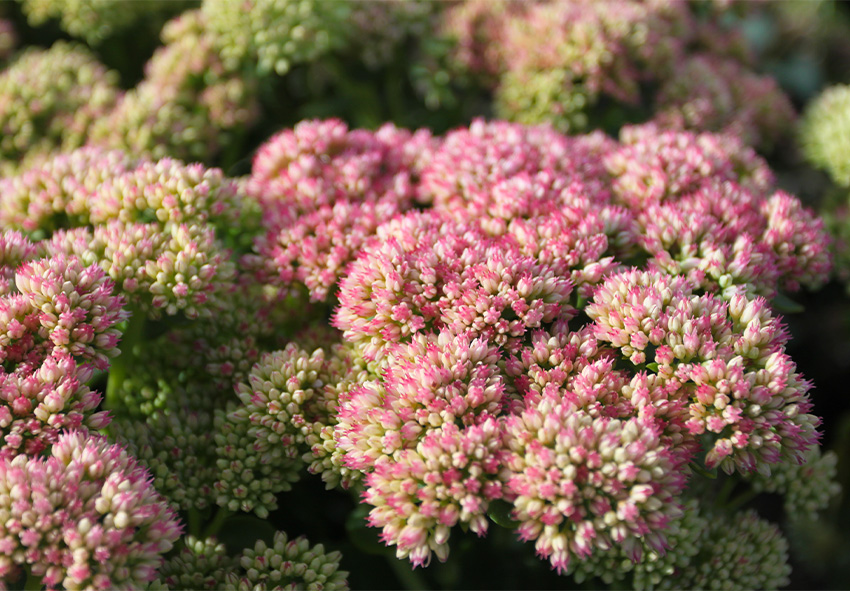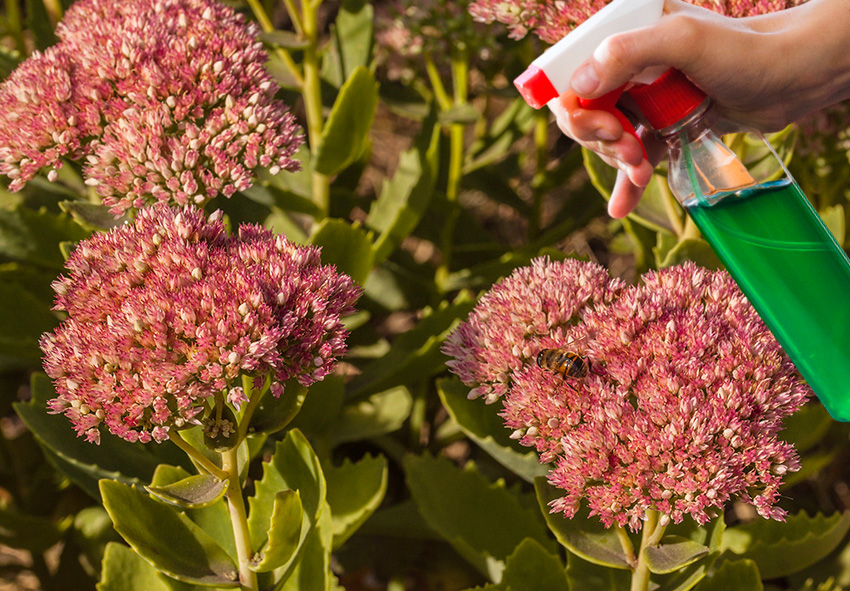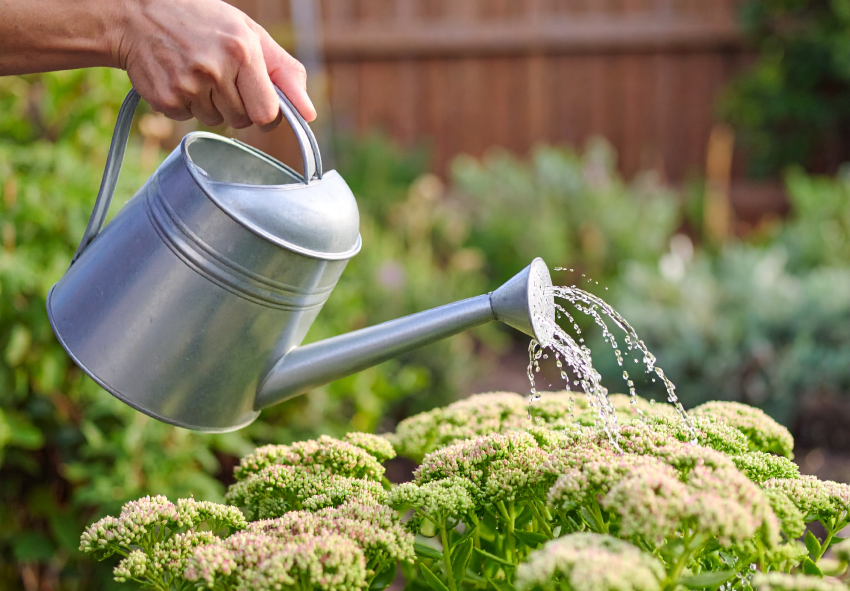Sedum is a popular succulent known for its vibrant foliage, drought tolerance, and low-maintenance nature. Whether you’re growing upright varieties like ‘Autumn Joy’ or groundcovers like ‘Dragon’s Blood,’ providing seasonal care can enhance their beauty and longevity. In this guide, we’ll walk through essential care tips for each season to help your sedum thrive all year round. Our gardening blog is a perfect place to find all the information you need!
Understanding Sedum Growth Cycles

Knowing how sedum grows throughout the year is the first step toward giving it the right care. These succulents follow a simple seasonal rhythm that determines when to water, prune, or leave them alone.
Sedum Growth Phases
Sedum’s growth cycle spans active growth in spring and summer, flowering in late summer to fall, and dormancy in winter. Recognizing this pattern helps with seasonal sedum maintenance and improves long-term health.
Common Types of Sedum
Sedum plants come in a wide range of forms, from compact groundcovers to tall, upright varieties. Here are some of the most popular types gardeners use in both ornamental beds and rock gardens:
- Sedum ‘Autumn Joy’ (Hylotelephium spectabile): A tall, upright variety with fleshy green leaves and rose-pink flowers that deepen to copper in fall. Ideal for perennial borders and late-season interest.
- Sedum ‘Dragon’s Blood’: A spreading groundcover with dark red foliage that intensifies in fall. It’s drought-tolerant and excellent for rock gardens or edging.
- Sedum spurium ‘Tricolor’: Known for its variegated green, pink, and white leaves, this low-growing type adds color even when not in bloom. Perfect for sunny containers or pathways.
- Sedum acre (Goldmoss Sedum): A tough, mat-forming species with bright yellow flowers in early summer. Great for poor soil and difficult, dry areas.
- Sedum rupestre ‘Angelina’: Features needle-like golden-green foliage that turns orange in cooler weather. This groundcover is ideal for color contrast and erosion control on slopes.
Spring Care for Sedum
Spring is a vital time for sedum plant care, as it sets the stage for a season of healthy growth and vibrant color. After the dormancy of winter, your sedum will benefit from cleanup and gentle nourishment.
Cleaning and Pruning
Start spring by removing old, dead stems and leaves to allow new shoots to emerge cleanly. Pruning back winter growth prevents overcrowding and gives your plant a fresh, tidy look. Be sure to use clean, sharp shears to avoid damaging the new growth. This small effort improves airflow and reduces the risk of springtime pests or disease.
Soil Check and Amendments
Healthy soil is the foundation for strong sedum growth in spring. This is the perfect time to check drainage and lightly amend the soil if needed with compost or slow-release fertilizer. Avoid overly rich amendments, as sedum prefers lean, well-drained soils. Testing pH can also help you better support nutrient uptake through the season.
Summer Care for Sedum
Summer is when your sedum plants are at their most vibrant, putting out lush foliage and setting buds. While they are drought-tolerant, they still need some care during hot weather to stay at their best.
Watering Needs in Heat
Even though sedum can go without water for stretches, intense summer heat may call for occasional deep watering. Just be sure to avoid overwatering, which can lead to root rot. Water at the base of the plant early in the day to prevent fungal issues. Mulching lightly can also help preserve soil moisture without smothering the plant.
Pest and Disease Monitoring

Even though sedum is a hardy, low-maintenance plant, it’s still wise to monitor for potential problems. Early detection helps prevent small issues from becoming bigger threats to your garden:
- Aphids: These small green or black insects often cluster on new growth and flower buds. They suck plant sap and can distort leaves and stems if not controlled.
- Mealybugs: These white, cottony pests hide in leaf joints and under stems. They feed on sap and may cause yellowing and stunted growth.
- Spider Mites: Tiny and hard to spot, spider mites create fine webbing and cause leaf speckling. Dry, hot conditions make infestations more likely.
- Powdery Mildew: A white, powdery fungus that appears on leaves, especially in humid or overcrowded areas. Improving airflow and reducing moisture can prevent it.
- Root Rot: Caused by overwatering or poor drainage, root rot leads to soft, brown roots and eventual plant collapse. Ensuring well-drained soil is the best defense.
Fall Care for Sedum
As the season shifts, sedum continues to impress with late-season color and structure. Fall care helps support blooming varieties and prepares all sedum for the colder months ahead.
Supporting Late Bloomers
Many upright sedums bloom in fall, making them important seasonal highlights. Stake taller stems to protect them from flopping under the weight of their flowers. Using unobtrusive supports early helps maintain a natural look as the plant matures. Trimming back faded blooms can also keep your garden tidy well into autumn.
Preparing for Dormancy
As temperatures drop, your sedum’s needs will change. Begin reducing watering and stop fertilizing so the plant can naturally wind down into dormancy. This helps the plant conserve energy for winter survival. Remove any heavily damaged leaves or stems to prevent decay during the cold months.
Winter Care for Sedum
It is important not only to know how to plant sedum, but also how to provide it with the necessary care during the rest period. A few simple steps will ensure they survive the cold and bounce back strong in spring.
Cold Hardiness and Protection
Most sedums tolerate freezing temperatures well, especially when planted in the ground. In harsher climates, a light mulch can help insulate the roots without causing excess moisture. Avoid covering the crown directly to prevent rot. If snow is expected, it can act as a natural insulator and protect the plant from wind damage.
Indoor Care for Potted Sedum
When temperatures drop or if you’re growing sedum year-round indoors, a few simple steps can keep your potted plants healthy and thriving. Sedums are adaptable but still require the right indoor environment to avoid stress:
- Provide Bright, Indirect Light: Place your sedum near a sunny window where it gets 4–6 hours of indirect sunlight daily. Avoid intense direct light, which can scorch leaves indoors.
- Water Sparingly: Sedum needs less water indoors, especially in winter. Let the soil dry out completely between waterings to prevent root rot.
- Ensure Good Drainage: Use pots with drainage holes and a well-draining cactus or succulent mix. Never let your plant sit in standing water.
- Avoid Humid Rooms: Sedum prefers dry air, so keep it away from overly humid areas like kitchens or bathrooms. Too much moisture can invite mold or mildew.
- Rotate the Pot Occasionally: Turn your pot every week or two so all sides get even light. This helps the plant grow upright and evenly, avoiding leaning or stretching.
Tips for Long-Term Sedum Health

With the right long-term strategies, your sedum can continue to thrive for years with minimal effort. Regular dividing, pruning, and monitoring keep your succulent garden in top shape.
Dividing and Propagating
Sedum can become overgrown after a few seasons, making spring a good time to divide the plant. It also propagates easily from cuttings, helping you expand your garden for free. Simply snip a healthy stem, let it callous, and plant in well-draining soil. Dividing also rejuvenates older plants that may have become woody or sparse in the center.
Managing Overgrowth
Groundcover sedums can spread aggressively and crowd out nearby plants. Trimming them back keeps growth in check and improves air circulation, especially in small or mixed plantings. Prune in early spring or after flowering for best results. This keeps your garden tidy and prevents sedum from dominating less vigorous plants.
Conclusion
Sedum is a standout in the garden thanks to its versatility, resilience, and colorful appeal. By adjusting your care approach throughout the year — pruning in spring, watering wisely in summer, supporting blooms in fall, and offering winter protection — you can enjoy healthy plants season after season. Ready to upgrade your succulent garden? Browse our collection of sedum varieties and supplies in our online store today!
Frequently Asked Questions (FAQs) about Care for Sedum
1. How often should I water sedum throughout the year?
Sedum requires minimal watering. In spring and summer, water only when the soil is dry. During fall, reduce watering, and in winter, water sparingly or not at all. Overwatering is a common problem, so it’s best to let the soil dry between waterings to prevent root rot.
2. Does sedum need fertilizer every season?
Sedum is a low-maintenance plant and doesn’t need frequent fertilization. In spring, a light application of balanced, slow-release fertilizer or compost can support growth. Avoid fertilizing in fall and winter, as the plant enters dormancy and excess nutrients can stress or damage its natural cycle.
3. Can I grow sedum indoors year-round?
Yes, many sedum varieties can grow indoors year-round. Ensure they receive 4–6 hours of bright, indirect light and use a well-draining potting mix. Indoor sedum needs less water, especially in cooler months. Rotate the plant occasionally to promote even growth and prevent leaning toward the light source.
4. Can I order Holland Sedum from your online store?
Yes, you can! Our online store Dutch-bulbs.com offers a wide selection of Sedum plants, including different varieties and colors. We take pride in providing top-quality plants that are carefully cultivated and shipped with care to ensure they reach you in perfect condition.
5. When and how should I divide sedum?
Divide sedum in early spring or fall when temperatures are mild. Gently dig up the plant, separate the root clumps, and replant them in new areas or containers. This helps manage overgrowth, encourages healthier growth, and gives you new plants to expand your garden or share.
Published: 22.07.2025
